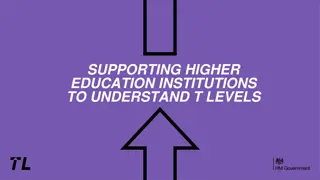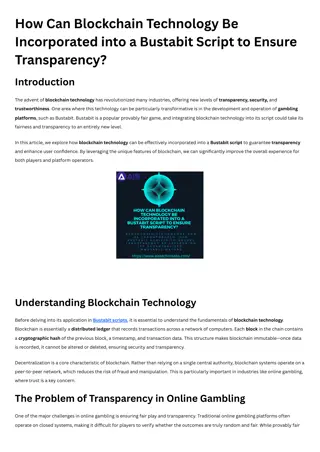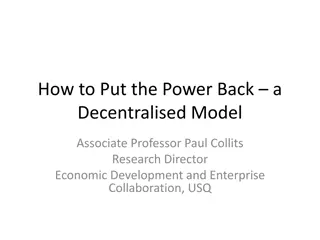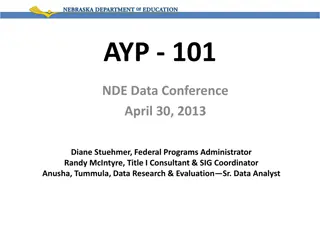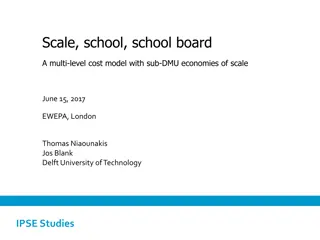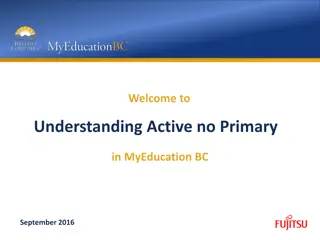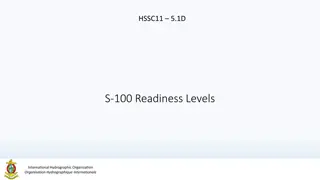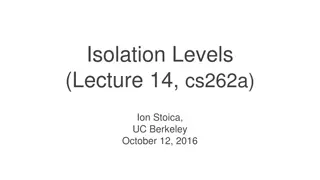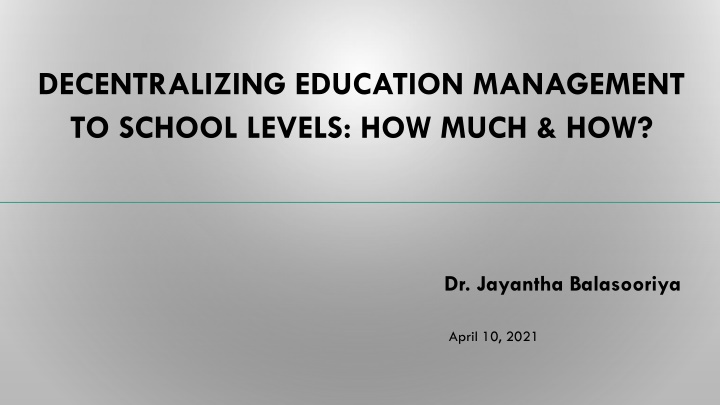
Decentralizing Education Management to School Levels: How and Why
Concept of School-Based Management (SBM) in decentralizing decision-making authority to the school level for improved education delivery, accountability, and efficiency. Learn the benefits, reasons, and frameworks behind decentralization in education management.
Download Presentation

Please find below an Image/Link to download the presentation.
The content on the website is provided AS IS for your information and personal use only. It may not be sold, licensed, or shared on other websites without obtaining consent from the author. If you encounter any issues during the download, it is possible that the publisher has removed the file from their server.
You are allowed to download the files provided on this website for personal or commercial use, subject to the condition that they are used lawfully. All files are the property of their respective owners.
The content on the website is provided AS IS for your information and personal use only. It may not be sold, licensed, or shared on other websites without obtaining consent from the author.
E N D
Presentation Transcript
DECENTRALIZING EDUCATION MANAGEMENT TO SCHOOL LEVELS: HOW MUCH & HOW? Dr. Jayantha Balasooriya April 10, 2021
INTRODUCTION Topic on decentralization or School-Based Management (SBM) has become a very popular movement over the last decade in the field of education. One way to decentralize decision-making power in education is known popularly as SBM. There are other names for this concept, but they all refer to the decentralization of authority from the central government to the school level. SBM emphasizes the individual school (represented by any combination of principals, teachers, parents, students, and other members of the school community) as the main decision-making authority, and holds this shift in the formulating of decisions will lead to improvement in the delivery of education.
WHAT IS DECENTRALIZING EDUCATION MANAGEMENT TO SCHOOL LEVELS? SBM is the decentralization of authority from the central government to the school level (Caldwell 2005). The aim of decentralization is to ensure transparent, representative, accountable and participatory systems of institutions and procedures for public decision-making . SBM, as it is limited to devolving decision-making authority to school level for financial and resources management, usually within a framework of external accountability. Improvements in school efficiency in resource management. Devolve powers to stakeholders at grassroots level. Working with new values, new decision-makers and a new set of management decisions and responsibilities. Improving students performance (learning outcomes) and for developing the quality of education. Participatory approach.
WHY DECENTRALIZING EDUCATION MANAGEMENT TO SCHOOL LEVELS? Democratic: distribution of powers, regulating institutional and individual behavior, allocating funds, empowerment and ownership. Recognition. of, and responsiveness to, local needs: large bureaucracies can overlook peripheral needs and ignore ethnic, linguistic, and regional cultural variation, while SBM allows local decision makers adapt education policies to local realities and needs and determine the appropriate mix of inputs. More effective educational delivery and use of resources at school, local, and regional levels. Improved communication between stakeholders, facilitating principals awareness of teacher and parent concerns. Greater accountability of schools and teachers to students, parents, and local communities. More transparent, reducing opportunities for corruption. Decisions made by groups, which are generally better than ones made by individuals. High levels of professionalism in schools. Improved student retention and learning. Training for parents and other stakeholders in shared decision-making, interpersonal skills, and management skills can benefit the community as a whole. The development of SBM is: relatively inexpensive as it in demand for greater freedom, reducing cost of maintaining a large central bureaucracy, empowering the community, achieving higher levels of professionalism through the involvement of teachers in decision-making, realization that different schools have different mixes of student needs that cannot be addressed centrally.
MODELS OF SBM Administrative control: devolves authority to the school principal. This model aims to make each school more accountable to the central district or board office. The benefits of this kind of SBM include increasing the efficiency of expenditures on personnel and curriculum, and making one person at each school more accountable to the central authority. Professional control: devolves the main decision-making authority to teachers. This model aims to make better use of teachers knowledge of what the school needs at the classroom level. Participating fully in the decision-making process can also motivate teachers to perform better and can lead to greater efficiency and effectiveness in teaching. Community control: devolves the main decision-making authority to parents or the local community. Under this model, teachers and principals are assumed to become more responsive to parents needs. Another benefit is that the curriculum can reflect local needs and preferences. Balanced control: balance decision-making authority between parents, teachers, principals, officials and other stakeholders who are the two main stakeholders in any school. It aims to take advantage of teachers detailed knowledge of the school to improve school management and to make schools more accountable to parents.
ARE WE DECENTRALIZED EDUCATION MANAGEMENT TO SCHOOL LEVELS? Administrative Financial Quality Learning resources Time Improving learning outcomes Improving socio-emotional skills Teacher development, SBPTD, CPD, CPLD
INITIATIVES 1982: establishment of SDSs 1993: introduced SDBs 1995: certain issues such as insignificant transfer of financial autonomy 2000: NBUCRAM, Quality Inputs 2006-2011: PSI as the national policy initiative: all government schools 2013: Circular No. 7/2013 dated November 28, 2013 2018: Circular No. 26/2018 dated June 22, 2018 2018/19: EPSI: all government schools
SUCCESS Effects of SBM on equity in education Equity of distribution of resources is determined by three principles: procedural equity and distributional equity: horizontal equity (treating equally those who are equally situated); vertical equity (treating students who have different needs with different levels of resources); and equal educational opportunity (all children should have equal opportunities to succeed without being discriminated against on account of their characteristics or place of residence). Effects of SBM on improving the quality of education and student learning outcomes Effects of SBM on efficiency and effectiveness: technical efficiency allocative efficiency X-inefficiency Increased community participation responsiveness. Increasing accountability and transparency.
LESSONS LEARNT We need to think are we really decentralized education matters to school levels. What areas can and cannot decentralized? Employment and deployment of teachers. Teacher salaries. School-based budget. School management: time, curriculum, teaching methodologies, learning instruments etc. Policies and practices.
WHAT WE WILL DO? Legal framework and visionary approach. Accountability framework. Can increase participation and improve school outcomes? Commitment and attitudes. Client power. ---- client and provider relationship -----








